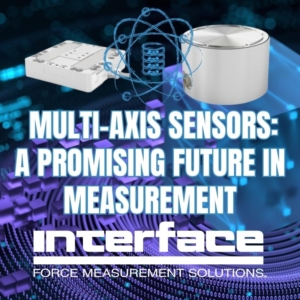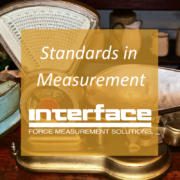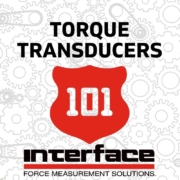A Promising Future in Measurement and Analysis Using Multi-Axis Sensors
 By combining the measurements from multiple axes, multi-axis sensors provide a better assessment of an object’s motion or orientation in three-dimensional space. Measuring the changes in resistance or output voltage from the sensing elements along multiple axes, multi-axis load cells can accurately determine the forces acting on them. The combination of the signals from different axes provides a comprehensive understanding of the force distribution, enabling engineers to analyze and optimize designs, evaluate structural integrity, and ensure safe and efficient operation in various applications.
By combining the measurements from multiple axes, multi-axis sensors provide a better assessment of an object’s motion or orientation in three-dimensional space. Measuring the changes in resistance or output voltage from the sensing elements along multiple axes, multi-axis load cells can accurately determine the forces acting on them. The combination of the signals from different axes provides a comprehensive understanding of the force distribution, enabling engineers to analyze and optimize designs, evaluate structural integrity, and ensure safe and efficient operation in various applications.
Multi-axis load cells have significant advantages and provide valuable benefits in testing labs. The top reason to use multi-axis sensors is to get more measurement data. The data provided when using a 2, 3 or 6-Axis load cell is used in various applications, including robotics, space projects, virtual reality, motion tracking, navigation systems, and innovative consumer products.
Engineers and product designers prefer multi-axis load cells for several reasons. Multi-axis load cells enable engineers and designers to capture forces along multiple directions simultaneously. This capability is particularly beneficial when dealing with complex and multidirectional forces, which are common in real-world applications. By obtaining a complete understanding of how forces act on a structure or product, engineers can design more robust and optimized solutions.
The Promises of Multi-Axis Sensors
- Comprehensive force measurement and better data analysis: Multi-axis load cells enable precise measurement of forces in multiple directions simultaneously. Multi-axis load cells provide richer and more comprehensive data for analysis. The data is valuable for evaluating structural integrity, load distribution, and performance characteristics of a design.
- Compact size with robust capabilities: Smaller sensors with digital outputs are easier and less expensive to permanently install into their machines. Size impacts the install, testing and monitoring. Multi-axis sensors are best embedded into products for a real-world application that needs the data, while reducing the number of single load cells and overall size of a product.
- Increased accuracy and reliability: Multi-axis sensors track performance and reliability better than traditional sensors with more measurements in more directions, enhancing the accuracy and reliability of test results. They provide a more complete understanding of how forces are distributed and interact within a structure, helping researchers and engineers make informed decisions based on reliable data.
- Wide range of applications: Multi-axis sensors are needed to keep up with modern technologies and application requirements. Multi-axis load cells are used in various testing scenarios, including materials testing, structural testing, product development, and quality control. They are used in industries such as aerospace, automotive, manufacturing, civil engineering, and more. As technology advances and testing requirements become more sophisticated, the demand for multi-axis load cells is likely to grow.
- Efficiency and cost-effectiveness: A single multi-axis load cell can replace multiple sensors. This consolidation simplifies the testing setup, reduces complexity, and lowers costs. Multi-axis sensors maximize return on investment for testing devices.
- Enhanced testing capabilities: Multi-axis load cells enable more advanced testing procedures. Digitized sensor information allows for remote monitoring increased analytics, easy access and data collection. This expands the range of tests that can be performed and provides more comprehensive data for analysis and evaluation.
- Saving space in testing: Using a single multi-axis load cell saves physical space in the testing. This is particularly important in situations where space limited or when performing tests in confined environments. By reducing the footprint of the load cell setup, engineers and designers can optimize the use of their workspace.
- Simplifying set-up: Using a single multi-axis load cell simplifies the testing setup compared to using multiple single-axis load cells. It reduces the number of sensors, cables, and connections required, leading to a streamlined testing process. This simplicity improves efficiency, saves time, and reduces the chances of errors associated with multiple sensors and connections.
Interface Multi-Axis Sensor Models
2-AXIS LOAD CELLS: Interface’s 2-Axis Load Cells measure any two forces or torques simultaneously, have minimal crosstalk, are standard off-the-shelf and are high accuracy sensors.
- TXY 2-Axis Force Load Cell
- AT101 2-Axis Axial Torsion Load Cell
- AT102 2-Axis Axial Torsion Load Cell
- 2816 2-Axis Axial Torsion Load Cell
- 1216 2-Axis Axial Torsion Load Cell
- 1516 2-Axis Axial Torsion Load Cell
- 5600 2-Axis Axial Torsion Load Cell
- AT103 2-Axis Axial Torsion Load Cell
3-AXIS LOAD CELLS: Interface’s 3-axis load cell measures force simultaneously in three mutually perpendicular axes: X, Y, and Z – tension and compression. Options include:
- 3A Series 3-Axis Force Load Cell
- 3A40 3-Axis Load Cell
- 3AR Series Round 3-Axis Load Cells
- 5200XYZ 3-Axis Force Moment Load Cell
6-AXIS LOAD CELLS: Interface’s 6-Axis Load Cell measures force simultaneously in three mutually perpendicular axes and three simultaneous torques about those same axes. Six full bridges provide mV/V output on six independent channels. A 36-term coefficient matrix is included for calculating the load and torque values in each axis. In the end, they provide more data, accuracy, are very stiff and cost-effective for a wide range of testing options.
- 6A Series 6-Axis High Capacity Load Cells – Fx Fy Fz Mx My Mz
- 6A Series 6-Axis Standard Capacity Load Cells – Fx Fy Fz Mx My Mz
- 6ADF Series 6-Axis Din Flange-Type Load Cells
Interface continues to add to our product line of advanced multi-axis sensors. Read New Interface Multi-Axis Load Cells to see our latest model additions.
The future of multi-axis is evolving in versatility for various system level health monitoring for products and components. Data is valuable now and in the future. These sensors enable test engineers to collect more data now for future analysis. For example, an automotive electronics manufacturer could limit recall to only parts that match extremely specific build criteria based on the detailed sensor data that is captured and stored during product evaluations and testing.
The outlook for multi-axis load cells is promising. Their ability to provide comprehensive force measurement, improve efficiency, and enhance testing capabilities makes them a valuable tool for researchers, engineers, and quality assurance professionals. With ongoing advancements in sensor technology and increasing demand for precise and reliable testing, multi-axis load cells are expected to play a crucial role in the future of testing labs.
ADDITIONAL RESOURCES
Using Multi-Axis Sensors To Bring Robotics To Life
Mounting Tips For Multi-Axis Sensors
BX8-HD44 BlueDAQ Series Data Acquisition System For Multi-Axis Sensors With Lab Enclosure
Enhancing Friction Testing With Multi-Axis Sensors
Recap Of Inventive Multi-Axis And Instrumentation Webinar
Interface Multi-Axis Sensor Market Research
Dimensions of Multi-Axis Sensors Virtual Event Recap
Better Data and Performance with Interface Multi-Axis Sensors








